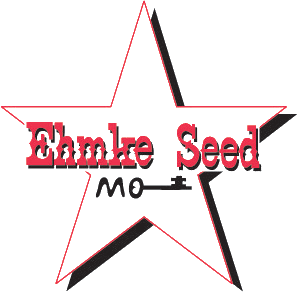By Mary Drewnoski for Hay and Forage Grower
Over the past three years, we have been trying to identify if there is a decisive difference between using cereal rye, winter triticale, or winter wheat as a forage resource for beef cattle.
Triticale is often held up as the best overall forage option. Indeed, when we evaluated these three species as options for silage production, triticale outyielded both cereal rye and wheat at the soft dough stage. However, at earlier stages, there did not appear to be a yield advantage of triticale over cereal rye, and both triticale and cereal rye seemed to outyield wheat.
Maturity differs
Cereal rye did seem to start maturing earlier and hit each of the maturity stages about a week before winter triticale. It is often thought that rye is lower quality than triticale, but when harvested at the same relative stage, there was surprisingly not a major difference between cereal rye and triticale.
Similarly, when grazed for a month in early spring (early April to early May) in Nebraska, forage quality among species did not appear to differ. Basically, all three species were top quality when grazed before the stem started to develop; however, in one year, the rye was ready to be grazed a week earlier than the triticale and wheat.
In another year, a cold snap after calves were turned out resulted in less growth for the triticale and wheat than the rye, limiting intake and lowering gains of the calves from 3.1 to 1.7 pounds per day. In the two years where intake was not limited, steer weight gains did not differ, averaging 3.4 pounds per day for all species.
Rye seems to be more productive when conditions are cold compared to wheat or triticale. This means that it can provide earlier grazing in the spring in the Upper Midwest and is likely the best match for double cropping.
On the other hand, triticale maintains its feed value better into late spring. This makes it well suited for hay and silage, or for stretching grazing well into June.
Wheat can have a dual purpose, allowing for grazing and grain, although in the Midwest, the grazing window for wheat is limited before it will start to reduce subsequent grain yield.
Maximize their advantages
Regardless of the species choice, there are some key recommendations that will ensure producers get the most out of these cereal forage sources.
- In general, earlier planting in the fall will result in more growth and earlier spring grazing. Corn silage ground is a great option for planting winterhardy small cereals as they will help reduce erosion and will have enough fall growth to allow for grazing in the early spring.
- To get top performance of growing calves or lactating cows, keep plants vegetative. Start grazing when the plants are about 5 inches tall and try to keep a maximum height of 8 to 10 inches. Rotational grazing can assist with keeping the plant maturity more uniform and reduce selective grazing.
- Boost stocking density as the spring progresses to ensure the cattle can keep up with the forage growth. This can be achieved by either adding more cattle or reducing the number of acres being grazed. A good starting point is about one cow or two stockers per acre.
- Make sure your mineral supplement contains a significant amount of magnesium (Mg). If using a 4-ounce mineral, aim for a least 10% Mg. This will prevent grass tetany in lactating cows and can improve gains in stocker calves.
As with most questions, the answer to which species is a better choice depends on the goals and situation. Each of these winterhardy small cereals can provide a high-quality source of forage for grazing at a time when few other options are available in the Midwest. Cereal rye is the most winterhardy and provides earlier grazing, triticale seems to provide more forage later in the spring, and wheat can offer the opportunity for grazing plus grain when planted early in the fall.
This article appeared in the April/May 2023 issue of Hay & Forage Grower on page 11.
